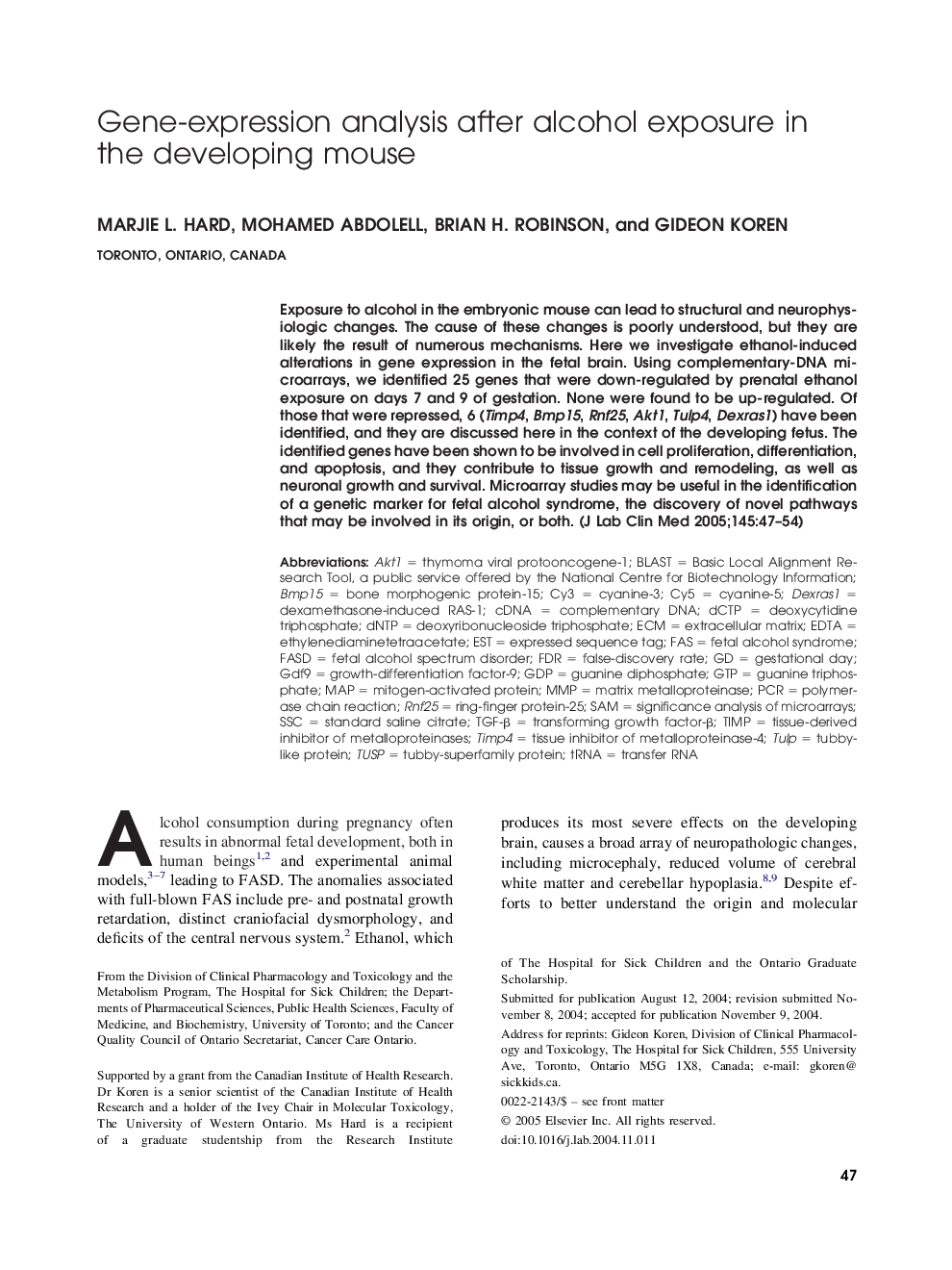| Article ID | Journal | Published Year | Pages | File Type |
|---|---|---|---|---|
| 9296520 | Journal of Laboratory and Clinical Medicine | 2005 | 8 Pages |
Abstract
Exposure to alcohol in the embryonic mouse can lead to structural and neurophysiologic changes. The cause of these changes is poorly understood, but they are likely the result of numerous mechanisms. Here we investigate ethanol-induced alterations in gene expression in the fetal brain. Using complementary-DNA microarrays, we identified 25 genes that were down-regulated by prenatal ethanol exposure on days 7 and 9 of gestation. None were found to be up-regulated. Of those that were repressed, 6 (Timp4, Bmp15, Rnf25, Akt1, Tulp4, Dexras1) have been identified, and they are discussed here in the context of the developing fetus. The identified genes have been shown to be involved in cell proliferation, differentiation, and apoptosis, and they contribute to tissue growth and remodeling, as well as neuronal growth and survival. Microarray studies may be useful in the identification of a genetic marker for fetal alcohol syndrome, the discovery of novel pathways that may be involved in its origin, or both.
Keywords
FASBmp15Cy5Cy3dCTPdNTPFASDAkt1SAMSSCGTPECMTGF-βMMPDexras1tRNAGDF9TIMP4FDRcDNAComplementary DNAEDTAethylenediaminetetraacetatefetal alcohol spectrum disorderESTstandard saline citratetransfer RNABlasttransforming growth factor-βSignificance Analysis of MicroarraysGDPExpressed Sequence Tagdeoxycytidine triphosphatedeoxyribonucleoside triphosphategestational dayTIMPFetal alcohol syndromecyanine-5Cyanine-3Extracellular matrixmatrix metalloproteinasefalse-discovery ratemappolymerase chain reactionPCRmitogen-activated proteinguanine triphosphateguanine diphosphate
Related Topics
Health Sciences
Medicine and Dentistry
Medicine and Dentistry (General)
Authors
Marjie L. Hard, Mohamed Abdolell, Brian H. Robinson, Gideon Koren,
